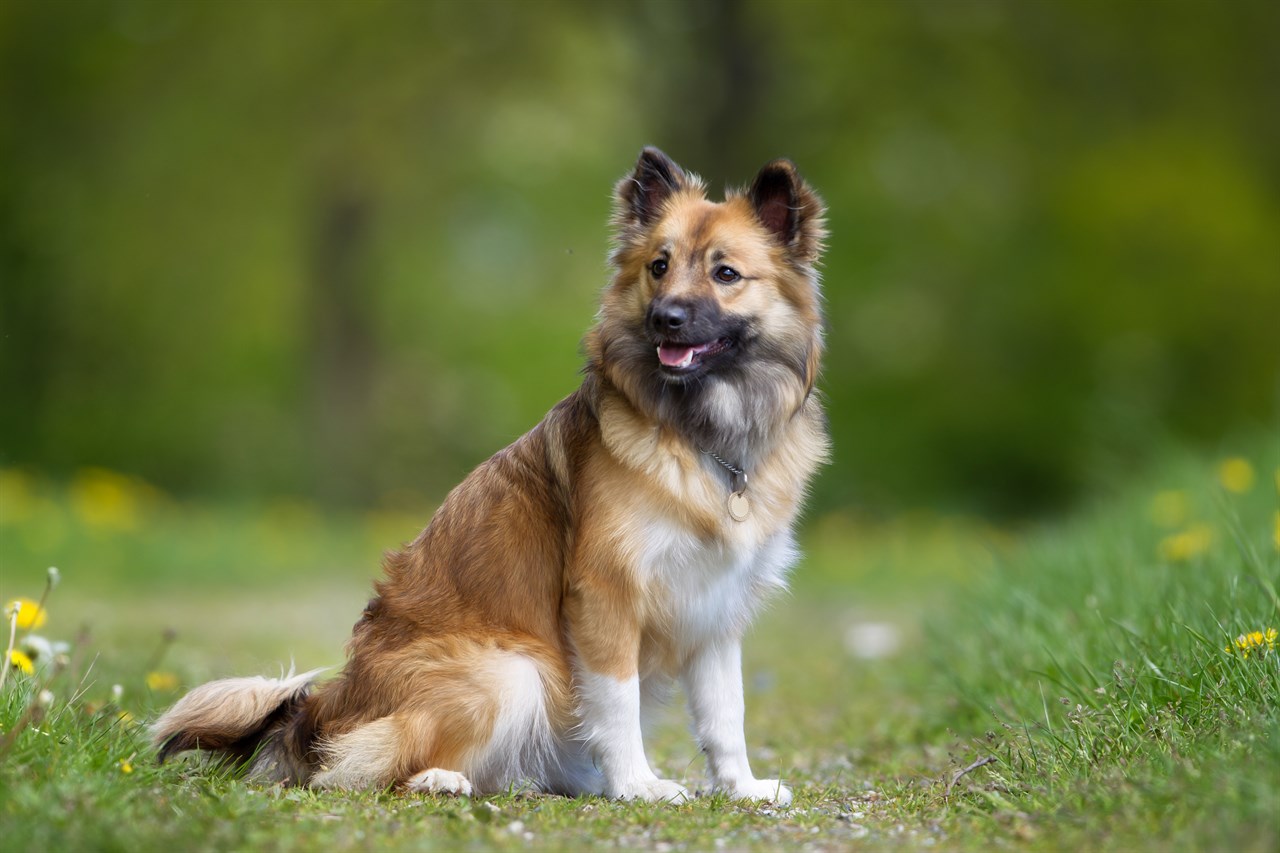The Icelandic Sheepdog: A Quaint Companion with a Rich Heritage

Introduction
Nestled in the lap of Nordic history and pastoral landscapes, the Icelandic Sheepdog emerges as a charismatic and versatile breed. Renowned for its unwavering loyalty, intelligence, and agility, this breed has not only served as a steadfast herding companion but has also endeared itself to families as a loving and devoted pet.
Breed History
The Icelandic Sheepdog's history is intertwined with the settlement of Iceland over a thousand years ago. Believed to have been brought to the island by the Vikings in the 9th and 10th centuries, these dogs played a crucial role in the agrarian life of the settlers. Excelling as herders, they assisted in managing livestock, primarily sheep, in the challenging Icelandic terrain.
This breed's resilience and adaptability to the harsh climate and demanding work endeared it to the local population, and over centuries, it became an integral part of Icelandic culture. However, by the mid-20th century, the Icelandic Sheepdog faced endangerment due to crossbreeding and changing agricultural practises. Fortunately, concerted efforts by breed enthusiasts led to a successful revival, and today, the Icelandic Sheepdog thrives not only in its homeland but also in various parts of the world.
Also Known As
The Icelandic Sheepdog is also known as the Iceland Spitz, Islandsk Farehond, Friaar Dog, Íslenskur fjárhundur, and Iceland Shepherd Dog by lovers of the breed.
Breed Group and Size
The Icelandic Sheepdog falls under the herding group, a testament to its historical role in assisting with livestock. Classified as a medium-sized breed, males typically stand between 46 to 51 centimetres at the shoulder, while females are slightly smaller, ranging from 41 to 46 centimetres. The well-proportioned body is sturdy and well-muscled, reflecting its agility and endurance.
Breed Coat, Colour, and Appearance
One of the most distinctive features of the Icelandic Sheepdog is its double coat, tailored to withstand Iceland's diverse weather conditions. The outer coat is thick, waterproof, and often sports longer, coarse guard hairs that provide insulation. Meanwhile, the soft and dense undercoat keeps the dog warm in colder temperatures.
The breed comes in a variety of colours, showcasing the Icelandic Sheepdog's charming diversity. Common colours include shades of tan, reddish-brown, grey, and black, often accompanied by white markings on the face, chest, belly, and paws. The tail is plumed and curls over the back, adding to the breed's picturesque appearance.
With a fox-like face adorned by almond-shaped, expressive eyes, the Icelandic Sheepdog's overall expression exudes intelligence and warmth. Ears are erect, alert to the surroundings, and the tail, carried high and curled, adds a touch of elegance to the breed's appearance.
Temperament
Beyond its captivating appearance, the Icelandic Sheepdog is celebrated for its amiable temperament. Known for being friendly, outgoing, and sociable, this breed makes an excellent family companion. Their intelligence and eagerness to please make them trainable, and their herding instincts often translate into an alert and protective demeanour.
The Icelandic Sheepdog thrives on human interaction, forming strong bonds with its family members. They are known to be good with children, displaying patience and a gentle demeanour. While inherently sociable, their herding background may result in a tendency to be cautious or reserved around strangers, making them excellent watchdogs.
Conclusion
In the Icelandic Sheepdog, we find not just a breed of historical significance but a delightful companion that seamlessly blends functionality with charm. Whether herding sheep in the rugged Icelandic landscape or lounging by the fireplace in a suburban home, this versatile breed brings joy, loyalty, and a touch of Nordic elegance to the lives of those fortunate enough to share it with them.
Continue reading our Icelandic Sheepdog in-depth articles
- Icelandic Sheepdog Temperament and Behaviour
- Icelandic Sheepdog Training and Socialisation
- Icelandic Sheepdog Toilet Training
- Icelandic Sheepdog Barking Habits
- Icelandic Sheepdog Grooming Requirements
- Icelandic Sheepdog Shedding Behaviour
- Icelandic Sheepdog Sleeping Behaviour
- Icelandic Sheepdog Diet and Feeding Requirements
- Icelandic Sheepdog Average Lifespan
- Icelandic Sheepdog Exercise Requirements
- Icelandic Sheepdog Common Health Issues
- Icelandic Sheepdog Suitability Guide
- Icelandic Sheepdog Advantages
- Icelandic Sheepdog Disadvantages
- Icelandic Sheepdog Cost to Buy and Own
- Icelandic Sheepdog Clubs and Links
- Selling Icelandic Sheepdog Puppy Litters and Dogs
- Buying Icelandic Sheepdog Puppies and Dogs
- Icelandic Sheepdog Alternatives
Icelandic Sheepdog puppies for sale
- Find Icelandic Sheepdog puppies for sale in ACT
- Find Icelandic Sheepdog puppies for sale in NSW
- Find Icelandic Sheepdog puppies for sale in NT
- Find Icelandic Sheepdog puppies for sale in QLD
- Find Icelandic Sheepdog puppies for sale in SA
- Find Icelandic Sheepdog puppies for sale in TAS
- Find Icelandic Sheepdog puppies for sale in VIC
- Find Icelandic Sheepdog puppies for sale in WA